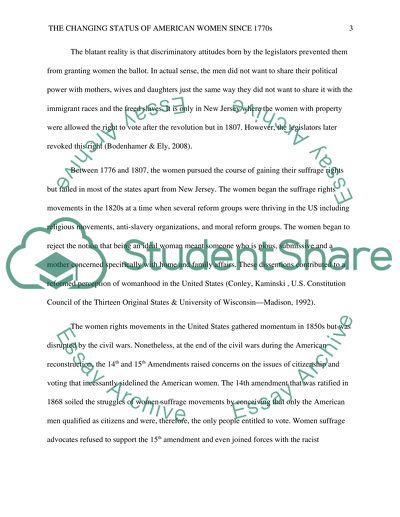Cite this document
(“The changing status of American women since 1770s Essay”, n.d.)
Retrieved from https://studentshare.org/sociology/1702482-the-changing-status-of-american-women-since-1770s
Retrieved from https://studentshare.org/sociology/1702482-the-changing-status-of-american-women-since-1770s
(The Changing Status of American Women since 1770s Essay)
https://studentshare.org/sociology/1702482-the-changing-status-of-american-women-since-1770s.
https://studentshare.org/sociology/1702482-the-changing-status-of-american-women-since-1770s.
“The Changing Status of American Women since 1770s Essay”, n.d. https://studentshare.org/sociology/1702482-the-changing-status-of-american-women-since-1770s.


